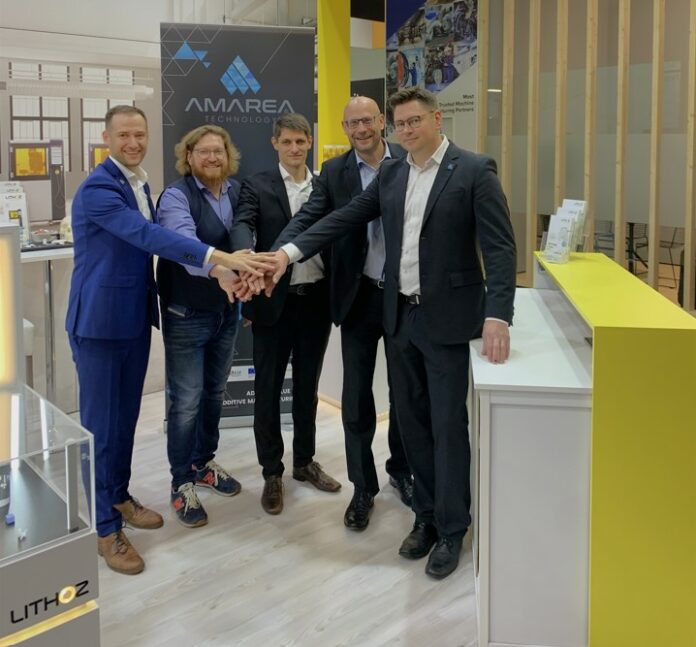On the heels of the recent launch of its multi-material 3D printer CeraFab Multi 2M30, ceramic 3D printing company Lithoz continues to push multimaterial 3D printing technique through the acquisition of a strategic share in AMAREA, a spin-off from Fraunhofer IKTS, a Dresden-based research institute with which it has been working with for a decade.
AMAREA develops a multi-material 3D printer that processes up to 6 different materials in one single print run. Their Multi-Material Jetting (MMJ) technology would enable new multidimensional combinations of various ceramics, metals, polymers and composites in both individual parts and functionally graded components.
A press communication from Lithoz explains that LP injection moulding inspired the development of this process. During the manufacturing phase, the high-filled thermoplastic base material developed and supplied by AMAREA Technology is dispensed drop by drop. Due to the nanoliter volume, the drops solidify in a fraction of a second, considerably speeding up the entire printing process.
Thanks to the selective droplet-based printing technology, parts achieve a considerably higher level of accuracy than material extrusion processes, for example. This allows a material change to take place every 200 μm so that highly functionalized components can be additively manufactured, the press communication reads.
“We had a great response to our multi-material 3D-printed heaters and igniters for high temperatures above 1000 degrees, which enable applications in harsh environments, too,” summarizes CEO Steven Weingarten as a conclusion from Formnext 2023.
According to Lithoz, the resulting functionally graded components would have a far higher density and better surface quality than those printed using other material extrusion techniques, for instance. Beyond that, it is also possible to exactly define requested porosities at any selected position within the component. More than 25 different materials have already been introduced to the MMJ production technique, with the portfolio continuously growing, while important parameters such as filling levels, porosity, gradient, layer height and density can be freely and specifically defined.
While the amount Lithoz invested has not been disclosed, the investment reminds me of something that becomes a fact among both newcomers and well established companies: invest first, learn lessons, and improve one’s own processes.
Remember, you can post job opportunities in the AM Industry on 3D ADEPT Media free of charge or look for a job via our job board. Make sure to follow us on our social networks and subscribe to our weekly newsletter : Facebook, Twitter, LinkedIn & Instagram ! If you want to be featured in the next issue of our digital magazine or if you hear a story that needs to be heard, make sure to send it to contact@3dadept.com


